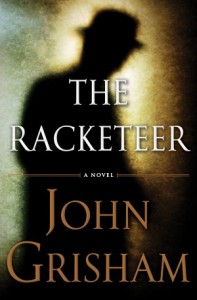A guest post by David Jón Fuller.
There are a lot of ways to express conflict through dialogue in a scene, but it can be very effective – and a lot of fun – if it isn’t done openly.
People (and characters) hate conflict. They usually do everything they can to avoid it, unless they’re devoid of empathy. But readers… they love conflict. It makes for great dialogue, exciting scenes, and a plot that keeps moving.
I think, as a writer, it can be easy to fall into placating one or the other of those camps. You want to protect your characters from too much pain, so they work out compromises too often and no one gets hurt. Or, you throw them into the exciting drama of constant conflict, and they will die on that hill before they give in.
The happy middle ground – for characters, your story, and readers – is somewhere in between; and when I’m writing scenes, I follow some basic guidelines that govern how it plays out. These aren’t the only ways to do it, of course, but they’re options to consider.
(Also: one assumption underlying any scene I write is that the characters in it need something from each other. If they didn’t, one or more of them would just leave.)
- Characters want different things, but they don’t necessarily say so.
Conflict is more than this:
Character 1: I want the thing!
Character 2: I don’t want you to have the thing!
It’s more often like this:
Character 1: Say, why don’t we go outside and enjoy the warm weather? (The thing I want is hidden in the garage, and I want to get it)
Character 2: No, let’s stay in the living room and play chess! (I’ve already stolen the thing from the garage and I don’t want you to find out)
Give your characters subtext! They don’t have to say what they really want from each other. In fact, I think it’s better if they avoid doing so until they have no other choice.
- Characters want different things, but one or both of them don’t realize it.
In a different scenario, things could play out like this:
Character 3: Is there a gas station coming up soon? (My highly contagious stomach flu which I haven’t told you about is acting up and I need a washroom)
Character 4: Don’t worry about that! Even though it says “empty” here, we have plenty of fuel. (If we stop, I’ll be late for my meeting with the loan shark I owe money to)
You can use this to heighten tension, but be careful about confusing the reader. You can make it clear something deeper is going on by showing other details, rather than having the character say anything.
Character 3: (gripping the armrest, sweating, pale, trying to conceal a grimace) Is there a gas station coming up soon?
Character 4: (Checks wristwatch, glancing repeatedly in rear-view mirror) Don’t worry about that! Even though it says “empty” here, we have plenty of fuel.
- Characters generally want to avoid revealing deep truths about themselves. They may not know those truths, either.
It would be nice if scenes played out as logically as this:
Character 5: If you leave home, I’ll feel like a failure as a parent! That’s why I’m trying to make you feel like you’re the failure for leaving.
Character 6: If you keep me here, I’ll feel as if I’m not my own person! I need to leave so I can prove to you – and myself — I’m competent and independent.
Even if both characters know what the underlying issue is, they may try to frame it in a way that makes themselves look better:
Character 5: Go ahead and leave – you’ll never make it on your own! (If you leave, I’ll feel like a failure as a parent)
Character 6: If I stay here, I’ll kill myself! Is that what you want? (I need to leave so I can prove to you – and myself – I’m competent and independent)
- Try this: whatever the character says, make it the opposite of that they really feel.
Instead of a straight back and forth like this:
Character 7: I’m so attracted to you, despite many reasons I shouldn’t be!
Character 8: You disgust me, but I want to help you!
It could go like this:
Character 7: Get out of here and leave me alone! (I want you to stay, but I’m afraid my attraction will become too strong and you’ll see I actually love you)
Character 8: As soon as you’re done throwing up, I will! (Drunkenness disgusts me but I couldn’t live with myself if you came to harm because I abandoned you)
- This is not so much a rule, but it’s a handy tool: Characters generally won’t say what they really, desperately want or need until the climax of the story. It doesn’t have to be a speech, it doesn’t have to be that articulate – but at the climax is where they will be most honest about what they say. If that means they can’t say anything, that’s fine, too. But I generally don’t think the climax is the point at which they will be flip or indifferent – it’s cards-on-the-table time. So when the conflict of the story comes to a head, try to find a way for the characters to declare, or defend, what they love and prize more than anything else. It can be as simple as a single word, like “No.”
If you use any of the above strategies throughout the story leading up to the climax —showing what your characters desperately want but won’t come out and say —having them finally be open about it in the climax can be very powerful.
For examples, think of your favourite books, stories, movies or plays, where the climax was truly electrifying. Consider why that is, and whether the characters are finally revealing something about themselves. I’d bet that very often, that revelation or all-pretenses-abandoned sense of the climactic scene is what gives it its power.
There are other strategies for writing dialogue, but the above approaches are ones I find most useful when throwing characters with different agendas together in a scene.

David Jón Fuller is a writer whose fiction has appeared in Long Hidden: Speculative Fiction From the Margins of History; Tesseracts 18: Wrestling With Gods; Kneeling in the Silver Light: Stories From the Great War; and in the upcoming anthology Accessing The Future. He lives in Winnipeg, and as time allows, blogs at www.davidjonfuller.com.



